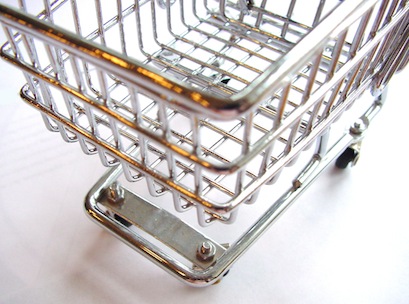 The most under appreciated truth in retail is that happy shoppers spend more, says Barry Lemmon, global head of the retail and shopper practice at TNS. But how do retailers increase customer satisfaction?
The most under appreciated truth in retail is that happy shoppers spend more, says Barry Lemmon, global head of the retail and shopper practice at TNS. But how do retailers increase customer satisfaction?
“I think a lot of people here in Australia feel they are behind and that things are going on in the US and UK that are far more advanced, but I’m not necessarily sure I would see it that way,” said Lemmon.
Globally, many brands think they have no option but to rely on price discounts as the primary tool to influence shoppers.
“We see a lot of people really trying to work out how they can get out of that spiral,” he said.
The answer is simple. Focus on what makes the shopper happy – but to do so, we must first understand the experiences that do the opposite.
Lemmon told Inside Shopper there is an emerging trend towards grocery shoppers making frequent smaller trips, moving away from the big weekly shop, with shoppers visiting more local and convenient outlets, as such, changing their shopper behaviour.
The reality is, shoppers want it to be easy, and although at first glance this doesn’t sound too difficult, the task of simplifying the shopping experience brings about a whole batch of challenges.
TNS has developed three principles of shopper understanding that are fundamental in making shoppers happier:
- The shopping mission and the intended consumer usage occasion are the primary drivers of shopper behaviour and products choice
- Shoppers are either ‘decided’ or ‘open’ when shopping a category and this determines their task at shelf
- Making it faster and easier for shoppers to find the products they want is proven to increase shopper spending.
The shopper’s mission will determine their channel choice. Understanding shoppers’ needs and expectations relating to the assortment of items available will determine the products they choose.
An example of driving shopper behaviour instore is dedicated areas for pre-packaged meals at supermarkets.
“Anything that makes things more convenient for people and helps them buy some time in their lives, tends to be really popular,” said Lemmon.
TNS research indicates that 69 per cent of supermarket shoppers buy the same brand as the last time they purchased from that category, so distinguishing whether shoppers are decided or open is key to understanding their needs.
Shopping is extremely habitual and most decisions are made long before the shopper reaches the shelf. Nintey per cent of a shoppers’ time is spent searching for a product they have already decided to buy, with only 10 per cent of time spent in active selection.
TNS have also found:
- The longer a shopper spends looking for a product within a category, the greater the likelihood of them giving up and walking away
- On average, 30 per cent of grocery shoppers who browse a shelf walk away empty handed
- 20 per cent of the items shoppers have specifically planned to buy don’t make it into the basket.
The solution: simplicity.
Making it faster and easier for shoppers to find the products they have already decided to buy, will lead to more incremental spending.
There is a significant correlation between speed and basket size, with large basket shoppers spending up to 10 times less in store than small basket shoppers.
“I think the opportunity is how you can make use of new technologies so to make shoppers lives easier, rather than just thinking ‘here’s a new vehicle for serving up promotions’,” said Lemmon.
In the US a retailer piloted a program enabling people to use smartphones to scan barcodes instore. This was linked to a loyalty card and automatic payment system, negating the need for cashiers.
The system took a 45 minute shopping trip and turned it into a 20 minute trip, and although shoppers spent less time instore, they increased their basket size.
“That is a very simple, but very good example of how you are using technology to make the shoppers life easier,” said Lemmon.
“They can get in and out of the store quickly and that actually leads to incremental purchasing, so it’s a win/win for the shopper and the retailer,” he said.
The concept of focusing on the shopper and trying to understand what the shopper is doing and how we can best influence them, is a relatively new discipline. It is one where there are few people with a depth of experience and expertise.
“Those challenges are very present in Australia, but they are present everywhere,” said Lemmon.
To overcome these challenges, Lemmon says retailers need to get an understanding of where purchase decisions are being made, and whether that decision is being made instore or a long time before the shopper arrives in the store.
“This is a pretty critical starting point, because until you understand that, you don’t really know where you should be investing to try and influence that decision.”
“You need to speak the shopper language. Shoppers don’t read more than eight words on a label and recognise items by shape and colour.
“Think what they’re doing, think what they’re looking at and what they remember. Think how little time they’ve got and how they’re trying to use shortcuts to find what they want to buy,” he said.
Lemmon has introduced the idea of the ‘shopsumer’ – thinking of the shopper and the consumer as one.
“You’ve got to think about how they are connected, and how you’ve got an integrated plan for influencing the shopper and the consumer as one.”
And therein lies the key to shopper happiness.
Barry Lemmon visited Australia as part of the POPAI Shopper Conference.





